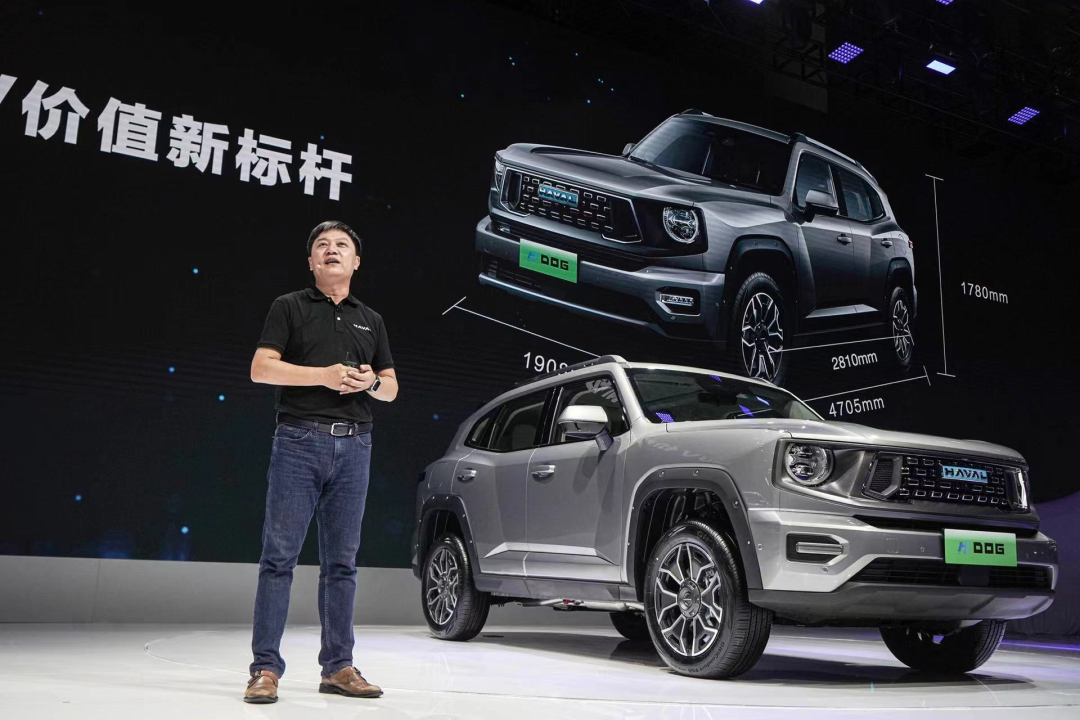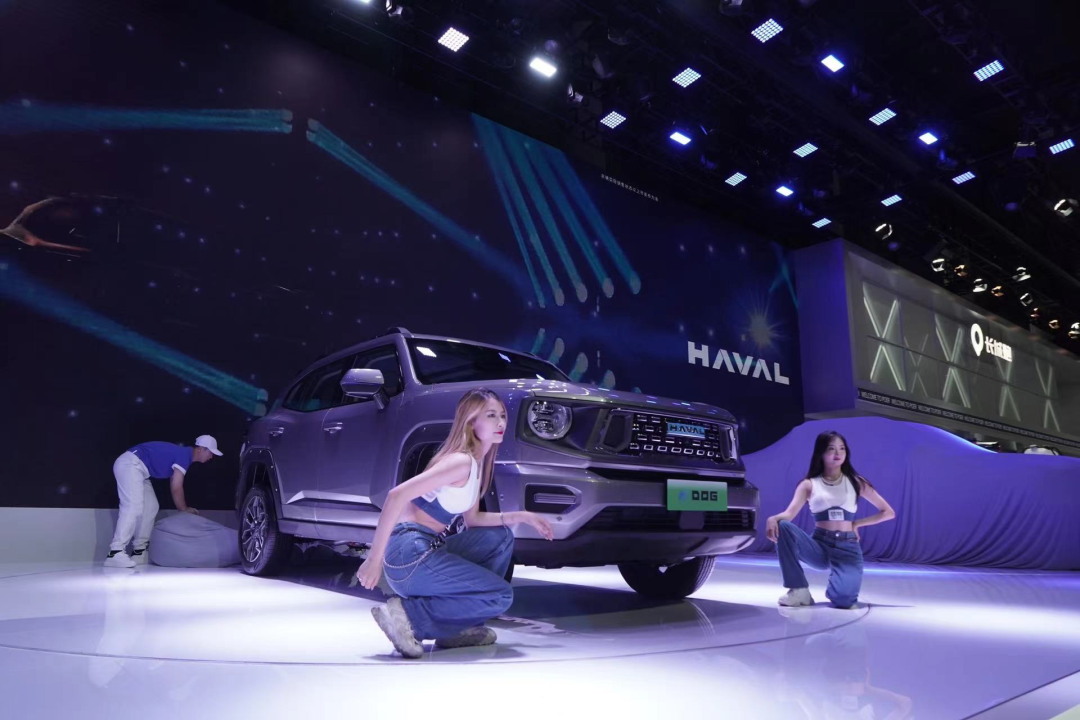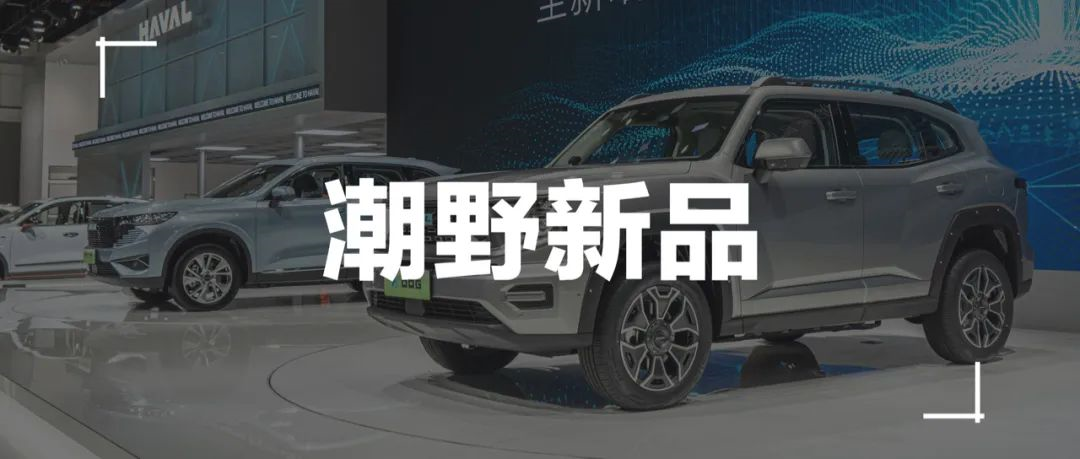Get to Know H-DOG, a New SUV Product from Haval Brand
Author: Mu Min
Although the Chengdu Auto Show came to an abrupt end, its role as a weather vane for the Chinese auto industry has become evident. From the indifference that greeted new forces like NIO, XPeng, and Li Auto at the 2019 Shanghai Auto Show to the packed exhibition booths showcasing new energy products in 2022, the way new energy products penetrate the market is shifting from being “enterprise-strategy oriented” to “consumer demand-oriented” within just four years.
This shift means two things. First, new forces are sparing no effort in product innovation, positioning their products to appeal to mainstream consumers, and not hiding their ambition to expand their production capacity. Second, the traditional giants are accelerating their transition into the new energy market by explicitly announcing the ban on selling products powered by fossil fuels and turning to electric vehicles (EVs).
It is in this context that Haval has brought a new midsize SUV product called H-DOG.
Now let’s take a closer look at some details of this product.
Both Oil and Electricity Powered
“Now is the time for gasoline cars to feel the pinch. Hybrid and electric cars have just begun to transform the market for gasoline cars on a large scale. The two will coexist for the next five years and replace gasoline cars as the market mainstream.
Apart from the emissions regulations required by law, consumers have also begun to appreciate the superior driving experience of electric vehicles. The reason why many people do not choose pure electric cars is that plug-in hybrid solutions with large battery packs are better suited for extended use scenarios, which is to say, they can go anywhere.”
This is what the general manager of a marketing agency for a major domestic automaker told me.
“Extended use scenarios” are one of the reasons why Haval has chosen to transition into new energy at this moment. With demand comes motivation, and once the strategic objectives are established, it is time to translate them into products.
Haval’s H-DOG is the first DHT-PHEV model in the canine product line, and it complements and enriches the brand’s product matrix. Although H-DOG is another “electric shock” from Haval, given that most non-head market consumers still lack convenient supplementary energy use conditions, the brand also offers a gasoline version of the model.
Therefore, one of the features of H-DOG is that consumers at all levels can find options that suit their needs.
Flexibly Powered by Oil and Electricity

H-DOG’s DHT-PHEV plug-in hybrid version is powered by a self-developed 4B15D 1.5T turbocharged engine from Great Wall and a 2-speed DHT hybrid-special transmission, with a total output power of 240 kW and a torque of 530 N·m. What level is this? In gasoline vehicles, this is basically a V6 turbocharged model priced at RMB500,000-600,000.The electric version boasts the advanced DHT dual-motor hybrid topology, which needs no further elaboration. Teamed up with a dedicated large battery pack optimized for direct drive operations across a broad range of driving scenarios, it offers a perfect blend between low-speed agility and high-speed cruising. The pure electric range of 50-150 km allows users to flexibly choose according to practical needs, making it universally accessible for both environmentalists and budget-conscious consumers.
On the other hand, the gasoline version comes standard with the new 4N20A 2.0T high-performance engine by Great Wall, coupled with the horizontally arranged 9DCT (nine-speed dual-clutch transmission) pioneered by Great Wall, capable of generating a peak output of 170 kW and 380 N·m of torque, a more mature and proven solution which only slightly lags behind Haval H9 in terms of torque, known for its emphasis on low-end climbing power.
That being said, to ensure a level of smoothness comparable to that of electric drives, Great Wall’s engineers have integrated an electronic pump and a highly integrated electronic module, along with finely-tuned transmission calibrations to achieve an output curve that is infinitely close to those of an electric drive. This enables even gasoline engines to deliver the smoothness and agility of electric ones.
While the hybrid version offers an unparalleled level of power and agility, the gasoline H-DOG is not one to be underestimated, delivering a solid 232 horsepower that can easily keep up with other peers in the same displacement category. Moreover, the H-DOG is more of a versatile “medium-sized dog” rather than a bulky “giant breed,” with an impressive overall performance, particularly in terms of power delivery.
However, for customers, the biggest advantage of H-DOG is not how powerful its engine runs, but the specific benefits brought by its hybrid system, most notably the following three:
Firstly, electric mode for city driving: With the large battery capacity and a range of 50-150 km purely on electric power, H-DOG hybrid users will find that the daily commute mileage of most city dwellers can be easily covered in electric-only mode, totally free from gasoline dependence. Not only is this cost-effective, but it’s also incredibly serene and comfortable.
Secondly, gasoline mode for highway driving: While new-energy vehicles often struggle with high energy consumption during high-speed cruising, H-DOG can smoothly switch from electric mode to gasoline mode, making it an ideal choice for highway driving with superior energy efficiency.
Lastly, smooth driving experience: Electric driving offers a smoother experience, which is especially noticeable at low speeds, the most common speeds used for urban driving. Consequently, going all-electric offers a better driving experience in most situations.
Overall, the H-DOG offers a solution perfectly tailored to address the biggest pain points faced by today’s drivers: the need for electric mode in the city, smooth and efficient gasoline mode on the highway, and zero range anxiety in hybrid mode.## Design Aesthetics: Balance and Harmony

With decades of technical reserves, Great Wall Motors has the capability to produce reliable vehicles. However, to capture demanding young consumers, putting effort into design is necessary.
From a user’s perspective, it is difficult to use rational logic to explain why a design looks good or bad. But from a designer’s perspective, no design is a random decision. It represents the positioning of the product and the target audience. If it deviates from the target market, the product will fail.
For H-DOG, the first label attached by Hawtai is “trendy and wild,” which is a concentrated adjective that includes target users’ aesthetic pursuit of “trendy, cool, individual, and unique,” and points out the relatively specific uses of “outdoor, off-road, camping, and exploring nature.”
The two are interdependent and H-DOG becomes an organic whole.

H-DOG’s surface and lines are extremely tough, and the mesh-style grille on the front face is visually striking. Combined with the round headlight design commonly seen on off-road vehicles, it forms the family-like design language for dogs. When the daytime running lights are turned on, it will also present the shape of a dog bone, which is an excellent case of concrete elements transforming into product identification points.
Sharp body lines are cut out to create a distinctive visual effect, while the black wheel arches bring out the wide-body design of the vehicle, highlighted by six rivets. This design is not only visually striking but also scratch-resistant during off-road activities.

The rear of the H-DOG is not as square as the Big Dog and Cool Dog. It pays more attention to the formation of front and rear consistency by incorporating round light elements. Without the influence of trendy elements, the overall raised tailgate surface is more full, concise, and round, like the round and plump buttocks of a Corgi.
The robust “little chubby dog” not only adds cuteness to the product but also signifies that the dog category is not obsessed with the simple application of family elements but pays genuine attention to the individual positioning and effective differentiation of each product.
By the way, let’s talk about the cabin design of H-DOG. The design of the Haval brand is very flexible, retaining the tough elements of the dog category, and making every corner of the car square and straight. Especially the prominent handle on the co-pilot seat is “stylish.” At the same time, it lives up to its high-end positioning with a bigger screen, more luxurious materials, and finer details.
In short, the designer adopted a strategy of “placing and collecting” in the shape of the H-DOG. Placing refers to the wildness inherited from the “dog” family, using exaggerated shapes in the front bumper, wheel arches, and headlights, which conforms to the “light cross-country” style. Collecting refers to some details such as the seemingly rough but chrome-plated small decorations on the front face, the large interior screen, and the outer periphery of the full carbon fiber interior handle.
Isn’t this kind of contrast between toughness and gentleness in line with the personality of young people who are both tough and gentle, and can adapt to different situations?
Focusing on Scenarios: The Extension of Life “Light Cross-Country”

Since the development of new energy vehicles, hybrid power has evolved from a transitional technology in people’s eyes to a unique category with no other advantages than “endurance.” Whether it is the average range of pure electric vehicles of 400 km a few years ago or the current 600 km+, single-battery endurance can meet daily needs. Coupled with the accelerating popularity of fast charging facilities, the pure electric camps seem to have an advantage in the “first-purchase market.”
However, different countries have their own unique situations. China is “big” enough to accommodate almost all the usage scenarios that new energy vehicles are good or bad at, thus giving birth to different needs for car use and target consumer groups.
Compared with the increasingly expensive cost of pure fuel vehicles and the pure electric vehicles that have not been able to completely eliminate the endurance anxiety, the “fuel-electricity convertible” of hybrid vehicles provides a broad enough travel radius in terms of basic needs, and naturally extends to the most diversified demand for car use.

If car companies only use “hybrid” and “performance” to differentiate their products and ignore that “usage scenarios” are the essence of developing new customers in the current competitive market for existing cars, it is easy to fall into the fixed mindset of traditional car companies that only considers mechanical quality when creating products. As a result, we will be surrounded by increasingly boring and homogeneous products, which will eventually force those personalized car models into a cycle of being niche and unprofitable.Only by combining the products defined by car companies with the specific usage scenarios of users can cars break away from simple “travel attributes” and truly embody the “lifestyle” that users long for.
In this regard, Ideal ONE solves the “family outing scene”; while H-DOG is more refined, choosing All in the “entertainment scene” that young people are keen on outdoor activities.
And as long as users with the keywords “outdoor, light luxury, camping” in their minds, they can occupy the corresponding segmented travel scenes.
On H-DOG, you can see the “light off-road” attribute that comes with 3/4 calibration of the dog category —— maximum approach angle of 24°, maximum departure angle of 30°, longitudinal through angle of 19°, minimum ground clearance of 200 mm, maximum wading depth of 560 mm. The fuel version model is equipped with BorgWarner’s intelligent electric four-wheel drive, and 9 kinds of all-terrain mode selection. It is capable of not only conquering most of the complicated roads around the city, but even completing a long-distance light crossing trip.
And when users arrive at their destination by driving, H-DOG’s new energy identity can provide the convenience and comfort of modern life for scenes far away from urban areas.
If you camp with a gas-powered vehicle, you can’t do without energy supply, otherwise those outdoor power sources, disposable stoves, and camping cooking utensils won’t sell well.
But H-DOG DHT-PHEV model comes with a huge battery pack, which is equivalent to a portable power bank. With a few small household appliances, you can enjoy the same “exquisite camping” as on Little Red Book at a very low cost. Whether it’s lighting or cooking, the power of the external power function can maintain the comfort and dignity of civilized society.
After all, young people don’t really like “real wilderness survival”, they just want to get closer to nature, that’s all.
Conclusion
Finally, in the words of Li Xiaorui, the general manager of the Haval brand:
We know that this is a journey full of challenges, so we are prepared: not only with the strong determination of self-transformation, but also with the super strength to achieve transformation.
The most powerful research and development and supply chain guarantee system, the top super hybrid technology and the most comprehensive product category layout are our confidence to rapidly switch to the new energy track and comprehensively lead.
The appearance of H-DOG is not only to demonstrate product strength, but also to open up a new segmented market of “light off-road, outdoor exquisite camping” for the Haval brand.
This article is a translation by ChatGPT of a Chinese report from 42HOW. If you have any questions about it, please email bd@42how.com.
